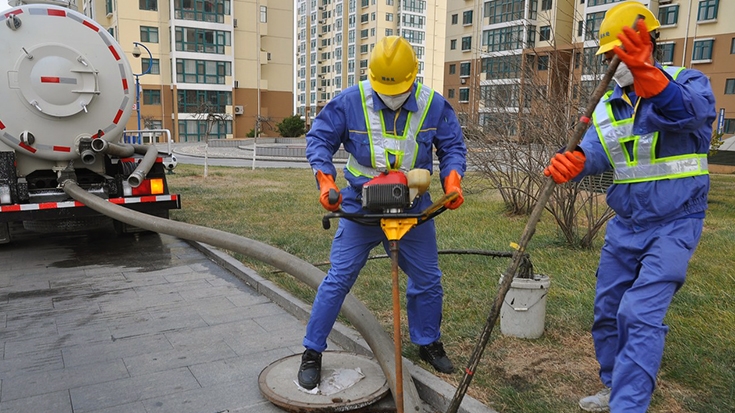Challenge
Shandong Province, the second most populous province of China with a population of more than 92 million people in 2007, was one of the fastest-growing provinces in the country. Situated on the east coast, it has a 3,000 km coastline with the Bohai and Yellow Seas, both of which drain a major part of the province.
However, Shandong faced infrastructure deficiencies in its fast growing smaller cities including:
- Poor quality and intermittent drinking water supply, due to inadequate water resources and unsafe fluoride-affected ground water;
- Lack of proper solid waste management systems;
- Recurrent flooding and waterlogging due to inadequate protection; and
- Poor environmental conditions, including insufficient drainage and wastewater treatment and serious pollution of rivers, and pollution discharges to the Bohai Sea which is a pollution hotspot in the seas of East Asia.
Solution
The project was designed to improve the environmental conditions in participating municipalities and counties through a package of measures including upgrading and development of wastewater collection and treatment facilities, river embankment rehabilitation, solid waste management, water supply improvements, industrial pollution monitoring, and enhancement of the financial performance and efficiency of key urban utility companies.
The project financed investments in wastewater collection network and treatment facilities in Gaomi, Qixia, Weifang, Weihai, Yantai, Zaozhuang, and Zhoucun with associated river embankment rehabilitation in Qixia, Weifang, and Zaozhuang, solid waste management in Heze and Rizhao, water supply improvements in Gaomi, and institutional development and capacity building for utilities, environmental protection bureaus and decision makers.
A grant provided by the Global Environment Facility (GEF) supported the development of a pilot septic-tank management system in Yantai to reduce land-based pollution along the Yantai coast and the Bohai Sea, and the dissemination of the Yantai model in Shandong Province and in other parts of China.
Result
Implemented between 2009 and 2013, the project achieved the following outcomes:
- The volume of wastewater treated more than doubled from 103 million m3/year in 2005 to 239.6 million m3/year by the end of 2013. The rate of wastewater treated in the cities and counties increased from 65% to 91.9% in the same period;
- Pollution loads discharged into rivers, expressed in Chemical Oxygen Demand (COD), was reduced by 37,125 tons/year by the end of 2013;
- Over 730,000 people received improved water supply, including 340,000 people in fluoride-affected areas. The percentage of the population with access to improved water supply reached 99%;
- Municipal solid waste collected and transferred to a sanitary landfill increased from 293,460 tons/year to 351,660 tons/year, and the percentage of population provided with solid waste services rose from 84% in 2005 to 99% by the end of 2013;
- The Provincial Environmental Protection Bureau strengthened its pollution control capacity with expansion of the online monitoring of industries and publication of real time monitoring data on its website, increasing the rate of compliance by industries.
- The GEF pilot introduced a lower cost technology and established permanent institutional arrangements for septic tank management in Yantai, including development of a GIS-based information management system to track and monitor tanker routes, operational data, and the frequency of emptying, leading to reduction of pollution loads, expressed in Biochemical Oxygen Demand (BOD), by 1,185 tons/year on average to the Bohai Sea.
Bank Group Contribution
The Bank provided a loan of $147 million to finance investments in water, wastewater and solid waste facilities, and GEF provided a grant of $5 million to demonstrate septic management techniques to help reduce land-based pollution reaching the Bohai Sea.
Partners
The World Bank worked closely with the Shandong Provincial Government during project implementation. The latter’s commitment and support was the key to the project’s success. In addition to financing 49.5% of the total project costs, the government maintained a strong environmental management agenda, provided high quality project management and coordination of implementation in project cities and counties, and set guidelines for minimum wastewater and solid waste tariffs to be adopted by municipal governments. It continued to give priority to industrial pollution control, enhanced its capacity for online monitoring of industries, and promoted water conservation through regulatory measures to limit use of groundwater and re-use of treated wastewater.
Moving Forward
After completion of the Second Shandong Environment Project, all the water supply, wastewater and solid waste companies in the project cities continue using the practices introduced including preparation of annual budgets for operation and maintenance of the facilities and annual financial statements including projections, while the Sichuan Provincial Government adheres pursues the policy for increasing financial autonomy of wastewater companies.
In Yantai, the municipal government plans to expand the septic tank management program citywide in a phased manner and incorporate the cost of septic tank management in the wastewater tariff in the next round of wastewater tariff revision. It will also review the city’s building code requirement of a septic tank for each building, irrespective of whether sewers are available.
Beneficiaries
It was estimated that about 4,169,000 people benefited from the project, including 340,000 people in fluoride-affected areas who benefitted from safer drinking water and about 300,000 people who benefited from improved environment through septic tank management pilot in Yantai.

